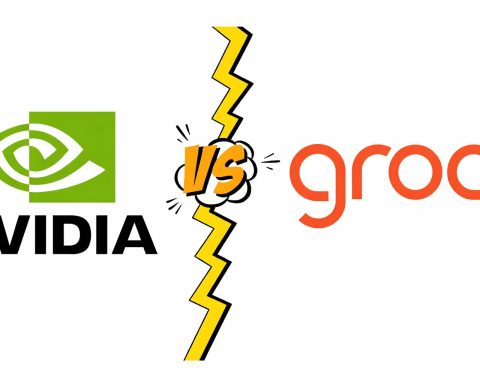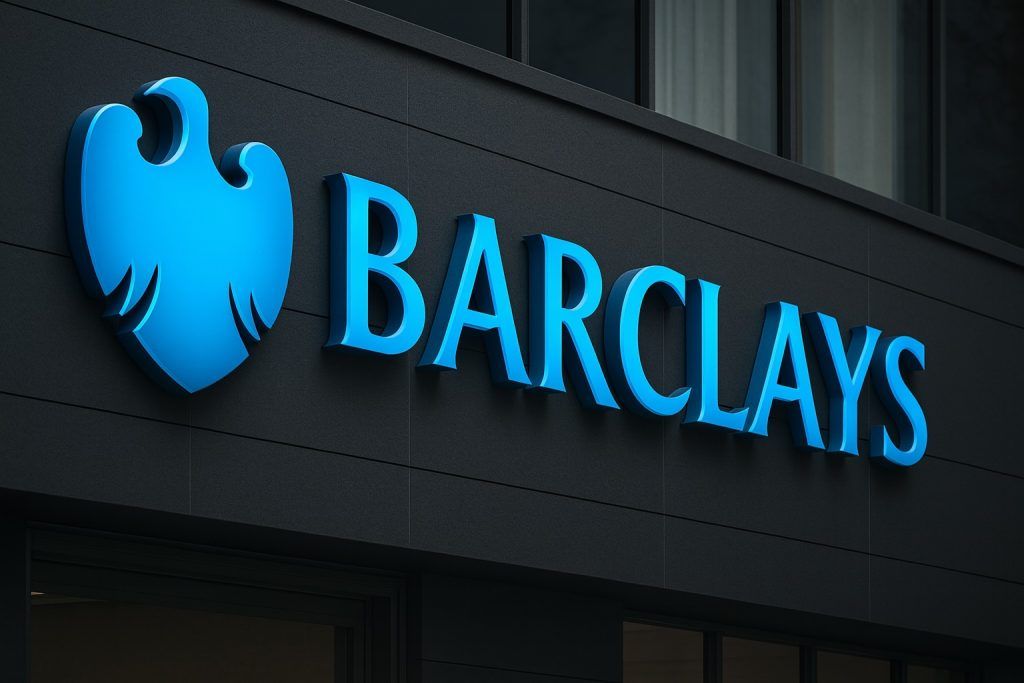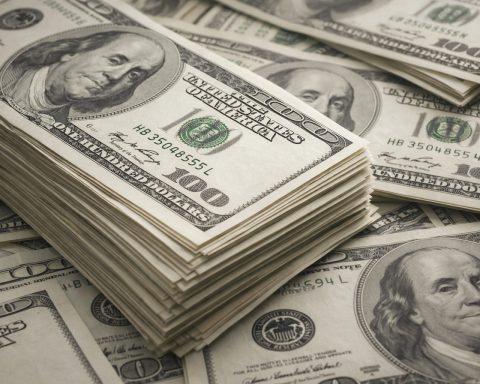- Gold explodes: Bullion has surged to all-time highs above $4,300/oz in mid-October, amounting to roughly a 60% gain in 2025 (vs. only ~15% for the S&P 500) [1] [2]. Silver and other precious metals have likewise spiked (silver hit record ~$53–54/oz) amid this rush [3] [4].
- Safe-haven forces: The rally is being driven by a “perfect storm” of factors – aggressive Federal Reserve rate‑cut bets, lingering inflation, geopolitical turmoil (trade wars, conflicts) and massive central‑bank buying. As one analyst noted, gold’s strength reflects “an extremely positive macroeconomic and geopolitical background for safe‑haven assets.” [5]
- Sharp swing: On Oct. 20, spot gold briefly peaked near $4,378/oz, only to plunge ~4–5% the next day – its steepest drop since 2020 [6]. This sudden sell-off was driven by profit‑taking and easing trade‑war fears, while stocks rallied in parallel. U.S. and Asian equity indexes jumped (~1% gains in major averages) on Oct. 21 as investors’ risk appetite returned [7] [8].
- Analysts split: Market pundits are divided. Some (Goldilocks Research, Kitco, etc.) warn of “aggressive profit booking” ahead, pointing to technical sell signals [9]. Others (HSBC, BofA, SocGen, Metals Focus) remain bullish – projecting gold near $5,000/oz by 2026 [10] [11]. Technical analyst Carl Capolingua cautions that gold’s rally has formed a “point of supply” around $4,392/oz, saying “while we’re below it, there’s a chance we’ve seen the top in the gold bull market.” [12]
With markets oscillating, investors are now watching key catalysts (U.S. CPI, Fed meetings, China trade talks, etc.) to see which way the pendulum will swing next.
Record-Busting Rally Amid Safe‑Haven Surge
Gold’s rally has been nothing short of historic. After starting 2025 around $2,700–$2,800/oz, gold broke the previous all‑time high of ~$4,200 and by mid‑October briefly traded near $4,378–$4,381/oz [13] [14]. As TechStock² reports, gold “breached the $4,300/oz mark” and is now roughly 60% higher on the year [15]. Silver and other precious metals have vaulted alongside: silver hit about $53–54/oz (a decades‑high) [16] [17], while platinum and palladium also climbed to multi‑year peaks.
This frenzy has been fueled by a broad flight to safety. Fed funds futures indicate almost certain rate cuts by October (and again in December), which has pushed bond yields and the U.S. dollar lower. In a low‑yield world, gold (which pays no interest) becomes much more attractive. Moreover, persistent inflation (around 3% in the U.S.) keeps the inflation‑hedge appeal intact. Geopolitical jitters – from renewed U.S.–China trade tension (including rare‑earth export curbs) to conflicts in Europe and the Middle East – have further driven money into safe havens [18] [19]. Central banks have joined the rush too: China, India, Turkey and others are stockpiling gold at record rates, and gold ETFs have seen record inflows [20] [21]. As one strategist put it, gold’s climb reflects a “growing unease about the economy and politics,” making bullion a go‑to refuge [22] [23].
Global markets have felt these dynamics. On Oct. 16, Reuters noted gold’s rise to new highs as traders “flocked to the safe‑haven metal on brewing U.S.‑China trade tensions and the U.S. government shutdown” [24]. Analysts like Zain Vawda of OANDA observe that gold’s trajectory now hinges on Fed policy and trade developments: “If [U.S.‑China] relationship continues to deteriorate… that could be the spark gold needs to cross the $5,000/oz barrier,” he said [25].
Sudden Pullback and Technical Warning Signs
After a relentless ascent, gold hit an “air pocket” on Oct. 21. Following the record $4,378 peak on Oct. 20, the price tumbled about 4–5% in one day – its largest one-day drop since mid-2020 [26] [27]. This was labeled by some analysts as a healthy “flash crash” or pullback after the frantic gains. As Reuters reported, there was no single obvious catalyst other than broad profit-taking after a “blockbuster run,” and even tech stocks showed similar wobbliness [28].
Technical charts have indeed flashed warning signals. Australian technical analyst Carl Capolingua notes that Oct. 17’s long black candle on gold (with record volume) created a new “point of supply” near $4,392/oz [29]. In his view, that level is now a key resistance. “While we’re below it, there’s a chance we’ve seen the top in the gold bull market,” he warned [30]. He and others are now in “confirmation mode”, watching closely if the market reverts back below major support levels. The setup suggests that absent a quick rebound above $4,392, gold could enter a corrective phase.
Evercore ISI’s Tony Sycamore echoed these concerns, telling clients gold was “massively stretched, massively overbought,” with a lot of FOMO (fear-of-missing-out) driving the rally [31]. (He noted that tech stocks were similarly overbought and had also briefly sold off.) Indeed, on Oct. 22 gold “dipped below $4,100,” continuing profit-taking from the prior day [32]. The sell-off in precious metals also coincided with steadier bond yields and a recovery in equity appetite. Crucially, this pullback did not spook bond markets or safe havens; U.S. Treasuries and other government bonds remained stable or rallied on data suggesting slower inflation, reinforcing expectations for easier monetary policy ahead [33].
Stocks Rally as Gold Cools Off
Ironically, the same days that saw gold pause also saw stocks surge. With rate cuts becoming all but a done deal, investors rotated back into risk assets. On Oct. 20, U.S. stock indices ended sharply higher – Nasdaq +1.4%, Dow +1.1%, S&P 500 +1.1% – as tech giants led the way (Apple hit an all‑time high) [34]. By Oct. 21, markets in Europe and Asia were also buoyant. TechStock² notes European bourses opened slightly up, and Asian markets jumped (Nikkei was near 50,000) as risk appetite improved [35] [36].
This risk-on sentiment put additional pressure on safe havens. Market commentators observed that “better risk appetite… is bearish for safe-haven metals,” as Kitco’s Jim Wyckoff put it [37]. In practice, a rising stock market and stronger dollar/yields mean less demand for gold as a refuge. Nevertheless, even with the bounce in equities, gold remains near unprecedented levels. (By comparison, Bitcoin and other assets have risen only modestly – gold’s 60%+ gain makes it “one of the year’s top-performing assets by a wide margin” [38].)
For stock investors, bullish forecasts abound. After the recent rally, some strategists have lifted their year-end targets. For example, after earnings season news on Oct. 20, Investopedia reported that all three U.S. indices had rallied and set new highs, underlining broad optimism [39]. Analysts note that strong corporate profits (e.g. rising tech earnings) and the weakening dollar offer further fuel. Yet some caution that valuations are high – for instance, the S&P 500 is trading at about 23x 2025 earnings (per Reuters) – so future gains may rely on continued economic growth and manageable inflation [40].
Forecasts: Boom or Bust?
Looking forward, opinions diverge dramatically. On the bear side, analysts like Gautam Shah (Goldilocks Research) explicitly warn of imminent profit-taking: “Aggressive profit booking is expected in gold and silver,” he told TechStock² [41]. Similarly, Capolingua’s technical work implies a potential top unless gold decisively overcomes supply around $4,400. Even Kitco News highlighted that some former Fed economists see underlying liquidity strains – one ex-Fed advisor called the sudden sell-off in gold a “major distress signal” of a systemic liquidity crisis (Kitco, Oct. 21) – suggesting caution in the precious metals market.
In contrast, many institutional bulls have upped their targets. In October, HSBC raised its 2025 average gold forecast to $3,355/oz (from $3,255 previously) [42], and analysts at Bank of America, Goldman Sachs and Société Générale have all discussed scenarios of gold testing $4,600–$5,000/oz in the coming 12–18 months. TechStock² summarizes these views, noting that by mid-2026 several banks now see gold reaching near $5,000 [43] [44]. Metals Focus (bullion research firm) is among them – its analyst Matthew Piggott has forecast ~$5,000 absent any “major shift” in current conditions [45].
These bullish forecasts hinge on the idea that the fundamental drivers remain in place. A confirmed Fed rate cut (or multiple cuts) would further depress yields and the dollar, typically lifting gold. Continued military or trade tensions could again renew haven demand. Additionally, heavy central bank and retail buying could keep a bid under prices even if speculative demand eases. In the near term, markets will closely watch U.S. inflation data (CPI) and the Fed’s October meeting for any surprises.
On the flip side, any hawkish turn – e.g. inflation proving stickier than thought, or a sudden jump in yields – could trigger more selling. Traders also note that gold has seen a parabolic rise: as one expert quipped, all bull markets eventually form their own “version of 4392” (the key resistance), and if that holds, a correction could deepen [46]. In summary, investors are torn between the view that gold’s rally is a historic, justified surge vs. a classic bubble about to briefly deflate. As TechStock² puts it, gold’s climb this year has been “driven by a perfect storm” – but whether it continues higher or gives back ground in 2026 is an open question [47] [48].
In short: Gold’s 2025 run has been extraordinary, but October’s volatility serves as a reminder that such rallies don’t end smoothly. For now, bulls and bears are watching the $4,350–$4,400 zone as a pivot: a sustained break above could signal fresh highs, whereas a decisive break below might mark the start of a deeper retracement. Meanwhile, stock markets continue to climb on easing fears, leaving investors to juggle the competing narratives of soaring safe havens vs. a peaking equity boom.
Sources: Recent market reports and analyses from Reuters, TechStock² (ts2.tech), Market Index (Australia), Investopedia, and industry experts (cited above) were used to compile this briefing. All forecasts and quotes are drawn from these sources.
References
1. ts2.tech, 2. ts2.tech, 3. ts2.tech, 4. ts2.tech, 5. ts2.tech, 6. ts2.tech, 7. www.investopedia.com, 8. ts2.tech, 9. ts2.tech, 10. ts2.tech, 11. www.reuters.com, 12. www.marketindex.com.au, 13. ts2.tech, 14. ts2.tech, 15. ts2.tech, 16. ts2.tech, 17. ts2.tech, 18. www.reuters.com, 19. ts2.tech, 20. ts2.tech, 21. www.reuters.com, 22. ts2.tech, 23. ts2.tech, 24. www.reuters.com, 25. www.reuters.com, 26. ts2.tech, 27. www.reuters.com, 28. www.reuters.com, 29. www.marketindex.com.au, 30. www.marketindex.com.au, 31. www.reuters.com, 32. www.reuters.com, 33. www.reuters.com, 34. www.investopedia.com, 35. ts2.tech, 36. ts2.tech, 37. ts2.tech, 38. ts2.tech, 39. www.investopedia.com, 40. www.reuters.com, 41. ts2.tech, 42. www.reuters.com, 43. ts2.tech, 44. ts2.tech, 45. ts2.tech, 46. www.marketindex.com.au, 47. ts2.tech, 48. ts2.tech










